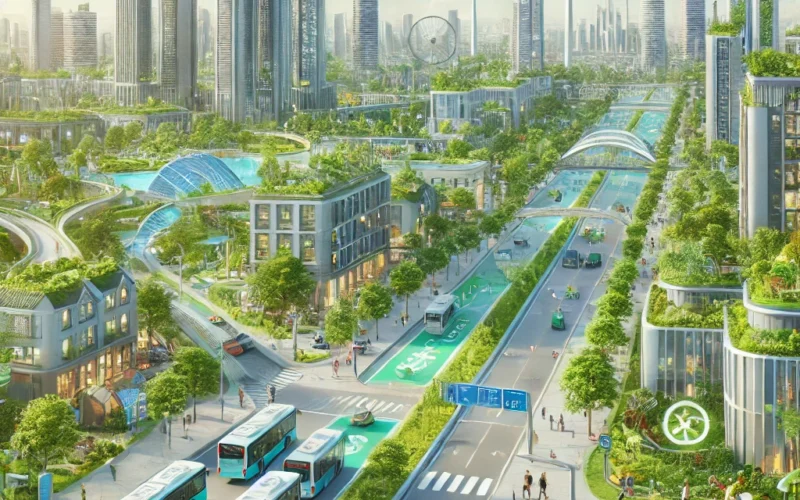As populations continue to grow, cities face unique challenges in meeting their residents’ needs. Urban areas must address housing, transportation, infrastructure, and sustainability issues to ensure a high quality of life for everyone. Implementing smart city solutions has become vital for handling the future demands of expanding populations. This article will explore how cities can prepare for the future by adopting innovative and sustainable practices.
Enhancing Public Transportation
One of the most pressing issues that cities face is transportation. As populations grow, traffic congestion becomes a significant concern, leading to increased pollution and longer commute times. By investing in efficient public transportation systems, cities can reduce the number of cars on the road.
Cities with robust public transportation systems also benefit from reduced greenhouse gas emissions and lower energy consumption. Additionally, improved accessibility to public transport can enhance mobility for all citizens, including those without personal vehicles. This is especially important as cities expand and transportation needs increase.
In this regard, Sand Technologies offers advanced AI Algorithms. With their advanced AI solution, they say, “Advanced AI algorithms can inform rollout strategies for mobility solutions, EV charging stations and new renewable-energy infrastructure. Computer vision can enable rapid learning from video footage to optimize transit and improve public safety.”
Sustainable Housing Solutions
Another major concern for growing urban populations is housing. As more people move to cities, there is a higher demand for affordable and sustainable living spaces. To address this, cities can focus on developing eco-friendly housing options that are both cost-effective and environmentally responsible.
Innovative building materials, energy-efficient designs, and green spaces can help reduce the environmental impact of new construction. These sustainable housing solutions can also lower utility costs for residents, making city living more affordable. Working with a utility bidder can further optimize energy consumption and reduce overall costs for residents, contributing to a more sustainable living environment.
Smart Water and Waste Management
With more people comes greater demand for resources like water and increased waste production. To handle these growing demands, cities must implement smart water and waste management systems. Advanced technology can help monitor and optimize water usage, reducing waste and ensuring everyone can access clean, safe water.
Regarding waste management, recycling programs and waste-to-energy technologies can help cities manage the increasing amounts of trash generated by larger populations. Cities that invest in smart waste management can reduce environmental impact while creating more sustainable living conditions for future generations.
Energy-Efficient Infrastructure
As urban populations grow, energy consumption also rises. Cities must focus on creating energy-efficient infrastructures to meet the rising demand without harming the environment. Installing energy-efficient lighting, promoting renewable energy sources like solar and wind, and encouraging the construction of energy-efficient buildings are all strategies that can help cities lower their carbon footprints.
Energy-efficient infrastructure reduces environmental impact and helps cities save money on energy costs in the long run. By embracing energy-efficient solutions, cities can better prepare for the future while maintaining sustainability.
Promoting Green Spaces and Urban Farming
As cities grow, maintaining access to green spaces becomes essential for residents’ health and well-being. Parks, community gardens, and urban farming initiatives provide much-needed natural spaces in densely populated urban areas. These green spaces help improve air quality, reduce heat island effects, and offer residents a place to relax and enjoy nature.
Urban farming is another innovative solution to meet the needs of growing populations. By encouraging local food production, cities can reduce the environmental impact of transporting food from rural areas to urban centers.
As urban populations grow, cities face transportation, housing, resource management, and sustainability challenges. By adopting smart city solutions like efficient public transport, sustainable housing, smart water management, energy-efficient infrastructure, and green spaces, cities can adapt to future demands. These innovations will make cities more livable and ensure a sustainable future for generations to come.

